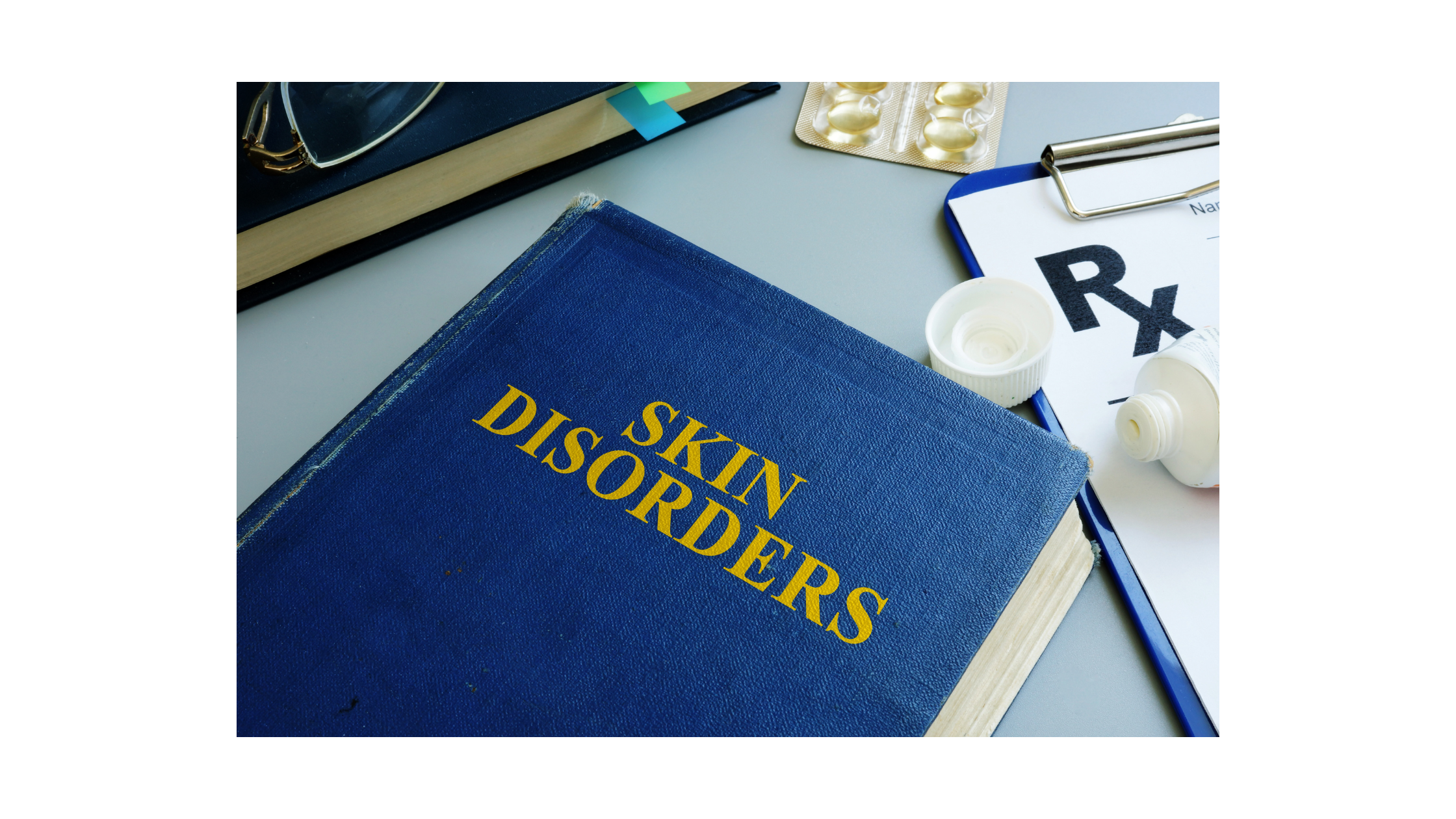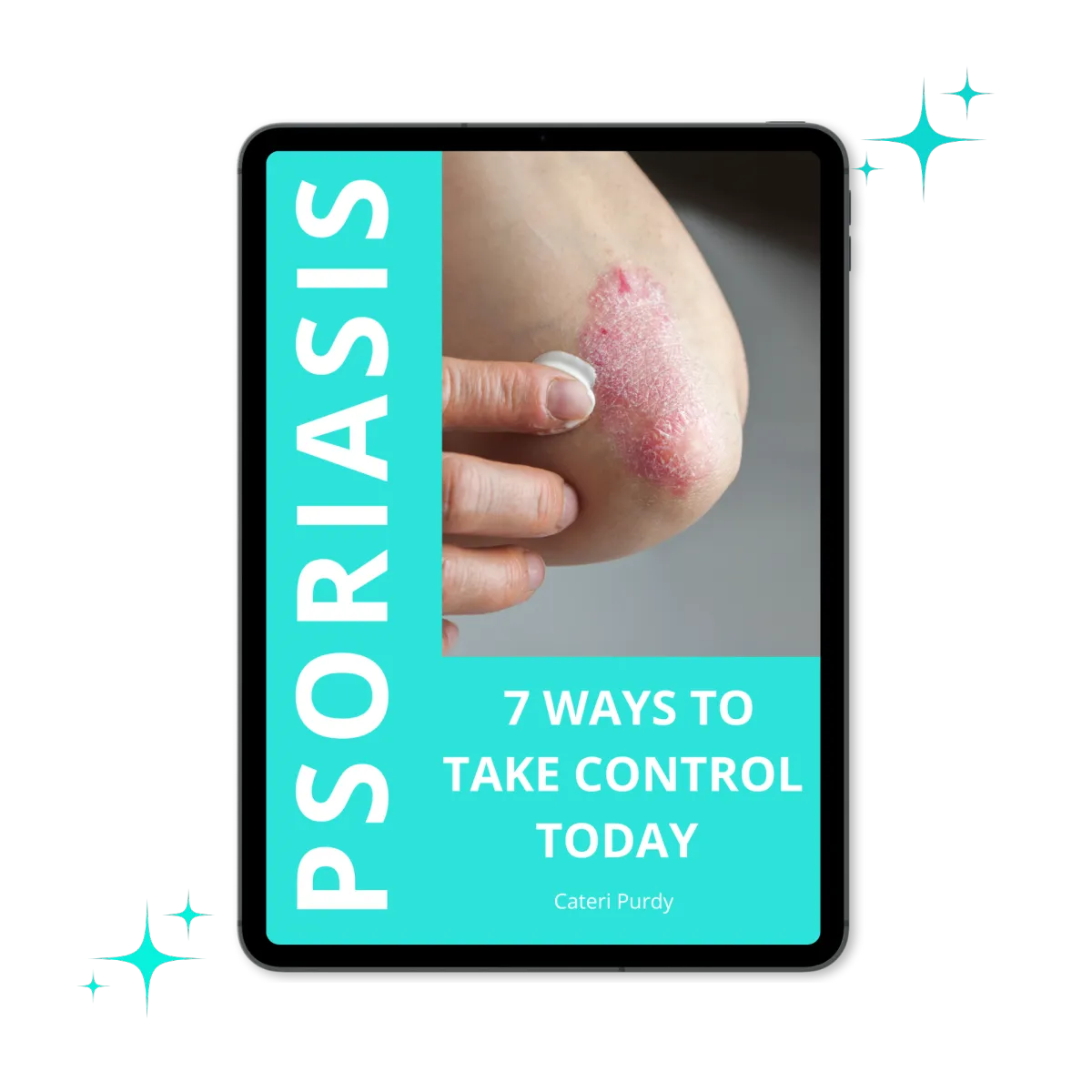What is Psoriasis?
Psoriasis is an inflammatory skin condition, where the skin cells reproduce much faster than normal. Most commonly this results in scaly, itchy, painful plaques forming on the skin, although it can manifest as other types of skin rashes . It can also lead on to psoriatic arthritis which affects the joints, and nail psoriasis where the nail bed can eventually become affected (see my blog "What is Psoriasis? for more information). Having psoriasis also makes us more susceptible to diabetes, heart disease and depression. Well that's great isn't is?
Psoriasis is classed as an autoimmune disease so unfortunately, this means that there is no cure. Once we have one autoimmune disease, it puts us at greater risk for getting another. However, if we can get to the root of what is triggering our psoriasis, and there can be many causes, remission is possible for so many of us. I know as I have managed to get into remission myself.
My mission is to help as many people as I can control their psoriasis, manage their flares and get their lives back.

Hi I'm Cateri
I am a Nutritional Therapist and I've been managing my psoriasis nearly all my life. I understand what you are going through and all the daily challenges you may face.
I have had to deal with the comments, the flaking skin, the MAD itching and how psoriasis can drag you down - to name just a few of the ways in which psoriasis interferes with your daily life. Oh, and I'm sure you can't live without your vacuum cleaner!
When people see your psoriasis, they think it is just a skin rash or you have hurt yourself. You get comments like “What have you done to your arm?”, “Is it contagious?” or even “Eww!! What is that?!” or “What is the elephant skin on your elbow?”. Not helpful is it?
Little do they know it is incredibly itchy, and you scratch it even when you don’t know you’re doing it. You don’t want to wear clothes that show it off, like short sleeves or summer clothes, or too many layers in the winter because that means you can’t get to the plaques too easily when it gets mad itchy. They don’t realise that the excuses you make not stay the night at their house is not because you’re being unsociable – its because the flaking of your skin gets everywhere, and you feel gross about it. They don’t realise you have to check your car before anyone gets in because the flakes have got all over the wheel and the dashboard (never really worked out why that happens!), but it makes you feel bad. You also feel awkward when you say you can't eat something that triggers your flare, and feel you're being fussy. It also doesn't help when they think they can catch it from you. What people also don’t realise is that what you actually have is an inflammatory autoimmune skin disease, which puts you at risk for other diseases such as heart disease and metabolic syndrome - to name just two. That’s great, isn’t it? Not only do we have to live with this miserable disease on a daily basis, but it raises the risk for more fun in the future.
So, what can we do to help ourselves. There are treatments such as steroids and biologics, but they do not suit everyone. I believe these are useful when you are in a massive flare up to get things under control. I also believe you can help yourself with changing your diet and lifestyle to reduce flares and manage your skin in the future. Sadly, we cannot cure our psoriasis and if anyone tells you they can, it is a warning sign. By delving into your health history, changing your diet and lifestyle you can work towards finding out what triggers your flares and manage your skin – and people often get into remission by doing so. Remission means that your skin clears up, but if you allow the triggers back into your life again, it will come back.
The problem is – how do you find out what is causing your flares when there is so much information out there on different diets and lifestyle habits? It all gets very overwhelming doesn't it? Especially as we are all so different and there are many different genes associated with the different types of psoriasis.
Let me help you get through the maze of information so you can find out what triggers your skin and learn how to manage it yourself.
How Can I Help?
One to One Support
The best way to tackle psoriasis is to get to the root cause, and the best way to do that is with a one to one consultation. This is where we can explore what is triggering your flares and make a personalised plan to change your diet and lifestyle so you finally get to manage your skin.


Membership
If you are not ready for a one to one consultation for any reason then my membership may be right for you.
Project Pso is a membership site that gives you plenty of information to help you understand what might be triggering your psoriasis and how to manage it.
Blog
If you would like some general information about how you can manage your psoriasis? Then read my blog here.

What is Psoriasis?
What is Psoriasis?
If you have psoriasis already, I am sure you already know what it is, but if you’re in any doubt here is a rundown of the different types of psoriasis and a brief description of each one.
Psoriasis is an inflammatory skin disease where the skin cells reproduce much faster than normal - every 4 days instead of every 21 days. There is no cure for this horrible disease, but some people do get into remission. Here are different types ....
Plaque
This is the most common type of psoriasis. The skin reproduces so quickly that red scaly plaques are formed. These can be extremely itchy, sore and sometimes weep. You can easily see and feel where each plaque starts and finishes, and the usually have a silvery appearance as the layers of skin cells build up. Psoriasis can start at any age, but it seems to appear most often between the ages of 18 to 30, and again around the ages of 50 to 60. Psoriasis affects approximately 2% of the population - equally between men and women.
Guttate
From the latin 'guttae' meaning 'drops', guttate psoriasis looks like small red or pink spots on the skin about a centimetre in diameter or darker patches on darker skin. The stomach, chest and back are common areas for guttate psoriasis to appear, but it can affect the face and arms and legs. Again, this can occur at any age but is more common in children and younger adults. The patches can be scaly and itchy in some, but others may not even notice them. Often guttate psoriasis follows a streptococcal throat infection. It can clear by itself in a few weeks or months but may return after more throat infections. It can also develop into other types of psoriasis.
Inverse or Flexural Psoriasis
This type appears in sensitive areas of the body such as the face, armpits, genitals, skin folds (such as underneath the breasts). This is less scaly and more red and shiny in appearance. Obviously, in intimate areas this can cause extreme embarrassment (which can make the rash worse), and it can be mistaken for other types of skin infections as it doesn’t typically look like psoriasis.
Scalp
Plaque psoriasis can often affect the scalp. It can form very thick scaly patches around the ears, on the back of the head just above the neck, and on to the forehead. As you can imagine the hair can be affected, but normal growth returns as the scalp is treated. Scalp psoriasis is difficult to hide as it causes severe flaking, and so can be very emotionally distressing - especially if you want to go to the hairdresser. It can be very itchy and sore just as plaque psoriasis is on other areas of the body.
Pustular - Generalised
This is a rare condition that affects more women than men. Small blisters filled with pus appear on the skin, although they are not caused by any infection. This can be a very serious so should be seen by a medical professional immediately. As with any autoimmune condition there can be a number of causes. It can be triggered by reducing steroids too quickly - another reason for tapering off steroids very slowly, again under medical supervision.
Pustular PPP
PPP stands for Palmoplantar Pustulosis and affects the palms of the hands and soles of the feet. Again, pus filled blisters form with dry cracked skin around them. This is thought to be an autoimmune condition where the body attacks the sweat glands specifically in these areas. PPP seems to affect more women than men and it is more common not to have any other form of psoriasis with this type. Although I have had psoriasis on the palms of my hands at the same time as having plaque psoriasis. I didn’t seem to have the pustules as it was more cracked and flakier…… nice!
Nail Psoriasis
This is very common and can affect at least half of those with any other type of psoriasis. Although you can develop nail psoriasis on its own. It is also extremely common among those with psoriatic arthritis. The nails can become discoloured, thickened pitted or brittle and break easily. The nail can also become detached from the nail bed. It can affect nails on both the fingers and the toes.
Psoriatic Arthritis
As the name suggests this type of psoriasis affects the joints, but it also affects tendons and ligaments which makes it different to other types of arthritis. The most affected joints are the knees, hands, feet, lower back and heels, but because tendons and ligaments are affected people may be misdiagnosed with tennis elbow or tendonitis. Again, no firm rules about psoriatic arthritis (PsA). Some people get it without having psoriasis, but most people get it after having the skin version first.
The way forward to dealing with psoriasis, or an other health issue for that matter, is to look for the root cause. Just putting something on your psoriasis is not the answer, although it will be one of the first things to do to start taking control of your skin. See my post on tips to manage your flares.
Why have I got psoriasis?
There definitely seems to be a genetic element to psoriasis. Most people can trace a family member who has had it or has gone into remission. However, if you do have one of the genes for psoriasis, you may not necessarily go on to get it. This is because a gene is like a loaded gun. It will not harm anyone unless you pull the trigger. There are many triggers for autoimmune diseases but the most common ones are:
Stress
Gut issues
Infections
Inflammation
It is important to understand these concepts:
Psoriasis almost always has a genetic component
You need a trigger - diet and lifestyle
Diet and lifestyle factors will keep the disease going
How can I get rid of it?
Psoriasis cannot be cured, but you can learn to manage your flares and work towards getting into remission, which means you can seem like you're cured but there is still a risk that it may return if the circumstances are right. However, psoriasis can go away unexpectedly. My Dad had a classic case history of psoriasis. He got a very serious throat infection at the age of 16 which triggered the disease. It went on throughout his life until it suddenly disappeared when was in his late 50's. In his late 80's it did return in the form of nail psoriasis. In order to manage your skin you need to find out:
if you have psoriasis in the family
what triggered it initially
what is keeping the disease going
What can I do to manage my flares?
Managing flares involves learning what is causing them in the first place. We are all different so it takes some detective work to find out our individual triggers. The first thing to do is keep a journal of when your skin flared and what happened immediately before then. Some common things to look out for are:
food intolerances
alcohol
lack of sleep
stress
Start looking for patterns of when your skin flares and also when it calms down. For example, my skin flares badly when I eat gluten and potatoes. However, it would always calm down on holiday, so I realised stress reduction and increasing my vitamin D levels (from the sunshine) were key in my flare management.
What can I put on my skin to calm it down?
Some natural alternatives to steroids that you can try on your skin include:
Aloe Vera gel
Apple cider vinegar (I have a great one with honey and turmeric) always dilute water first as it can be too harsh to put directly on the skin
Any lotion with the herb Oregon grape (Mahonia Aquifolium)
Products containing Dead Sea minerals
Personally I have found shea butter really soothing. Mine contains lavender essential oil and I find it is brilliant at softening plaques
These products may help calm down your flares while you work on the root cause or causes, which start on the inside.
© 2023 CATERI PURDY
FREE DOWNLOAD

